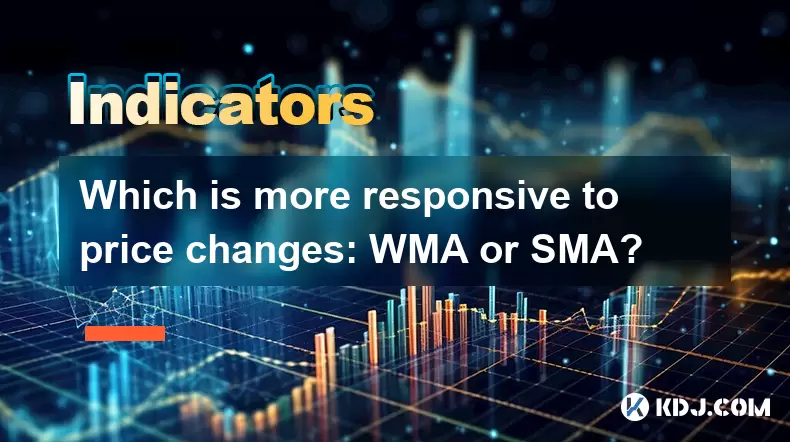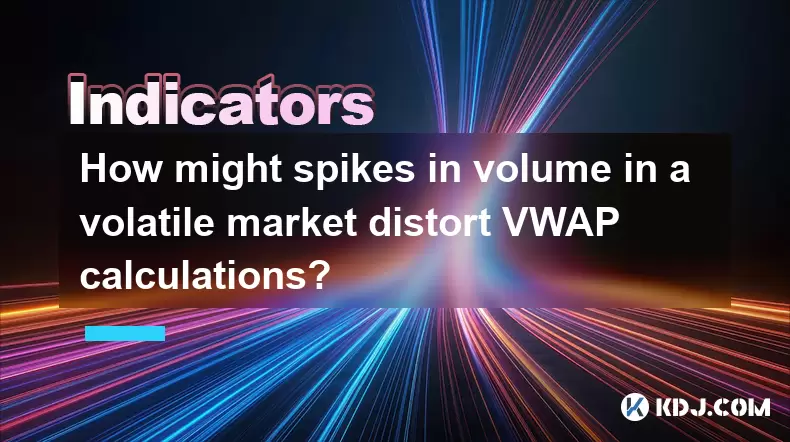-
 Bitcoin
Bitcoin $117700
-0.03% -
 Ethereum
Ethereum $3805
0.49% -
 XRP
XRP $3.098
-1.00% -
 Tether USDt
Tether USDt $1.000
0.03% -
 BNB
BNB $792.8
-1.72% -
 Solana
Solana $177.9
-1.95% -
 USDC
USDC $1.000
0.02% -
 Dogecoin
Dogecoin $0.2202
-1.55% -
 TRON
TRON $0.3278
-2.92% -
 Cardano
Cardano $0.7641
-2.43% -
 Hyperliquid
Hyperliquid $42.21
-2.68% -
 Sui
Sui $3.758
-1.58% -
 Stellar
Stellar $0.4080
-3.21% -
 Chainlink
Chainlink $17.75
-0.33% -
 Bitcoin Cash
Bitcoin Cash $591.8
4.96% -
 Hedera
Hedera $0.2561
-3.09% -
 Avalanche
Avalanche $23.34
-4.24% -
 Litecoin
Litecoin $110.7
1.96% -
 UNUS SED LEO
UNUS SED LEO $8.956
-0.01% -
 Toncoin
Toncoin $3.410
0.79% -
 Ethena USDe
Ethena USDe $1.001
0.03% -
 Shiba Inu
Shiba Inu $0.00001288
-1.82% -
 Uniswap
Uniswap $10.07
-2.06% -
 Polkadot
Polkadot $3.807
-2.27% -
 Monero
Monero $308.2
-2.15% -
 Dai
Dai $1.000
0.03% -
 Bitget Token
Bitget Token $4.521
-0.30% -
 Pepe
Pepe $0.00001134
-1.52% -
 Cronos
Cronos $0.1457
0.65% -
 Aave
Aave $274.9
-2.47%
Which is more responsive to price changes: WMA or SMA?
The Weighted Moving Average (WMA) reacts faster than SMA by giving more weight to recent prices, making it ideal for timely trading signals in volatile crypto markets.
Jul 30, 2025 at 05:00 pm

Understanding Weighted Moving Average (WMA)
The Weighted Moving Average (WMA) assigns greater importance to recent price data, making it inherently more sensitive to new information. Unlike simple averages, the WMA applies a weighting factor that increases linearly with the recency of the data point. For instance, in a 5-period WMA, the most recent price is multiplied by 5, the prior by 4, and so on, down to 1 for the oldest price. These weighted values are then summed and divided by the sum of the weights (in this case, 1+2+3+4+5 = 15). This mathematical structure ensures that recent price movements have a disproportionately larger impact on the resulting average.
Because of this design, the WMA reacts more quickly when prices shift. Traders who rely on timely signals often favor WMA because it reduces lag. For example, if Bitcoin’s price surges from $40,000 to $42,000 in one day, the WMA will reflect this change more rapidly than other moving averages due to the amplified weight on the latest data. This responsiveness makes WMA particularly useful in short-term trading strategies where timing is critical.
Understanding Simple Moving Average (SMA)
The Simple Moving Average (SMA) calculates the arithmetic mean of a set of prices over a defined number of periods. For a 10-day SMA, the closing prices of the last 10 days are added together and divided by 10. Each price point in the period contributes equally to the final value. This uniform treatment means that older data has the same influence as newer data, which introduces a time lag in the indicator’s response to price changes.
When a sudden price spike or drop occurs, the SMA adjusts gradually. For example, if Ethereum drops sharply from $2,500 to $2,300 in a single session, the SMA will absorb this change slowly over the next several periods. The full impact isn’t immediate because the new price must replace the oldest price in the calculation window. This inherent smoothing effect makes the SMA less reactive, which can be beneficial for filtering out market noise but detrimental when quick reaction is needed.
Comparing Reaction Speed: WMA vs SMA
When evaluating responsiveness, the key differentiator lies in how each average treats time. The WMA’s emphasis on recent data allows it to track price movements more closely. In contrast, the SMA’s equal weighting dilutes the impact of new information. As a result, during volatile market conditions—such as during a flash crash or a sudden rally—the WMA line on a chart will deviate from the SMA, typically moving faster in the direction of the price change.
Consider a scenario where Solana’s price increases from $100 to $115 within two days. A 7-period WMA will reflect this surge almost immediately due to the high weight on the latest closing prices. Meanwhile, the 7-period SMA will show a more gradual incline, as it averages in the lower prices from earlier in the week. This difference in slope demonstrates that WMA provides earlier signals for potential trend changes, which can be crucial for entry and exit decisions.
Practical Steps to Implement WMA and SMA on Trading Platforms
To observe the responsiveness difference firsthand, traders can set up both indicators on most charting platforms such as TradingView, Binance, or MetaTrader. Below are the steps to add and compare them:
- Open the chart of any cryptocurrency, such as Cardano (ADA).
- Click on the “Indicators” button, usually located at the top of the interface.
- Search for “Simple Moving Average” and add it to the chart.
- Set the period (e.g., 14) and confirm.
- Repeat the process, but this time search for “Weighted Moving Average.”
- Apply the same period (14) to ensure a fair comparison.
- Adjust the colors of the two lines (e.g., blue for SMA, red for WMA) for clarity.
- Observe how the red (WMA) line moves more sharply in response to price changes.
This side-by-side visualization clearly shows that WMA hugs the price action more tightly than SMA, especially during rapid movements. The gap between the two lines widens precisely when volatility increases, highlighting WMA’s reduced lag.
Using WMA and SMA in Trading Signals
Traders often use crossovers between price and moving averages, or between two moving averages, to generate signals. For instance, a golden cross occurs when a short-term moving average crosses above a long-term one, suggesting bullish momentum. When using WMA in such strategies, the crossover tends to happen earlier than with SMA.
Suppose a trader uses a 9-period and 21-period combination. If Litecoin’s price begins to rise, the 9-period WMA will cross above the 21-period WMA before the same crossover appears with SMA. This earlier signal can lead to faster trade entries. However, it also increases the risk of false signals during choppy markets, as the WMA may react to short-lived fluctuations. Conversely, SMA crossovers are slower but often more reliable in confirming sustained trends.
Volatility and Indicator Sensitivity
Cryptocurrency markets are known for high volatility, which amplifies the differences between WMA and SMA. During periods of rapid price swings, such as those seen during major news events or exchange outages, the WMA’s responsiveness becomes especially pronounced. It will track the upper and lower bounds of price action more closely, potentially offering better timing for scalping or day trading.
However, this sensitivity can also lead to whipsaws—false signals caused by price reversals. For example, if Dogecoin briefly spikes due to a viral tweet and then retraces, the WMA might suggest a buy signal that quickly turns invalid. The SMA, being smoother, would likely not generate a crossover at all, thus avoiding the misleading signal. This trade-off between speed and reliability is central to choosing between the two indicators.
Frequently Asked Questions
Why does WMA react faster than SMA?
The WMA assigns higher weights to recent prices, so any change in the latest data has a stronger influence on the average. SMA treats all prices equally, which delays its response.
Can I replace SMA with WMA in my existing trading strategy?
Yes, but expect earlier entry and exit signals. You may need to adjust your risk management rules to account for increased sensitivity and potential false signals.
Is WMA always better than SMA in crypto trading?
Not necessarily. While WMA is more responsive, SMA is better at filtering out market noise. The choice depends on your trading style—short-term traders may prefer WMA, while long-term investors might favor SMA.
How do I calculate a 5-period WMA manually?
Multiply the most recent price by 5, the previous by 4, and so on until the oldest by 1. Sum these values and divide by the sum of the weights (1+2+3+4+5 = 15). The result is the 5-period WMA.
Disclaimer:info@kdj.com
The information provided is not trading advice. kdj.com does not assume any responsibility for any investments made based on the information provided in this article. Cryptocurrencies are highly volatile and it is highly recommended that you invest with caution after thorough research!
If you believe that the content used on this website infringes your copyright, please contact us immediately (info@kdj.com) and we will delete it promptly.
- LYNO Token Presale: AI Arbitrage Revolution in DeFi
- 2025-07-31 05:11:11
- Pepecoin Successors: Can These Cryptocurrencies Make You a Millionaire?
- 2025-07-31 05:50:12
- AML Bitcoin Fraud: Cracking Down on Crypto Crime in the Big Apple and Beyond
- 2025-07-31 04:33:53
- Cardano (ADA) in 2025: Navigating Crypto's Future
- 2025-07-31 03:52:07
- Solana Meme Coin Price Prediction: Will the Frog Outleap the Dog?
- 2025-07-31 03:52:07
- Bitcoin's Bullish Outlook: CryptoQuant's Insights on Futures Market Cooling
- 2025-07-31 03:59:10
Related knowledge

How to use the AVL indicator to confirm a trend?
Jul 31,2025 at 10:25am
Understanding the AVL Indicator and Its ComponentsThe AVL indicator, also known as the Accumulation Volume Line, is a technical analysis tool that com...

How to use the AVL indicator with MACD for better signals?
Jul 31,2025 at 09:22am
Understanding the AVL Indicator and Its Role in Cryptocurrency TradingThe AVL indicator, also known as the Accumulation Volume Line, is a volume-based...

How to identify sell signals with the AVL indicator?
Jul 31,2025 at 07:09am
Understanding the AVL Indicator and Its Core ComponentsThe AVL indicator, also known as the Accumulation Volume Line, is a volume-based technical anal...

What are the best settings for the AVL indicator?
Jul 31,2025 at 10:04am
Understanding the AVL Indicator and Its PurposeThe AVL indicator, also known as the Accumulation Volume Line, is a technical analysis tool used in the...

How does the VWAP line help in identifying overbought and oversold market conditions?
Jul 31,2025 at 05:19am
Understanding the VWAP Line and Its Role in Technical AnalysisThe Volume Weighted Average Price (VWAP) is a critical tool used by traders within the c...

How might spikes in volume in a volatile market distort VWAP calculations?
Jul 31,2025 at 07:40am
Understanding VWAP and Its Core ComponentsVWAP, or Volume-Weighted Average Price, is a trading benchmark that gives the average price a cryptocurrency...

How to use the AVL indicator to confirm a trend?
Jul 31,2025 at 10:25am
Understanding the AVL Indicator and Its ComponentsThe AVL indicator, also known as the Accumulation Volume Line, is a technical analysis tool that com...

How to use the AVL indicator with MACD for better signals?
Jul 31,2025 at 09:22am
Understanding the AVL Indicator and Its Role in Cryptocurrency TradingThe AVL indicator, also known as the Accumulation Volume Line, is a volume-based...

How to identify sell signals with the AVL indicator?
Jul 31,2025 at 07:09am
Understanding the AVL Indicator and Its Core ComponentsThe AVL indicator, also known as the Accumulation Volume Line, is a volume-based technical anal...

What are the best settings for the AVL indicator?
Jul 31,2025 at 10:04am
Understanding the AVL Indicator and Its PurposeThe AVL indicator, also known as the Accumulation Volume Line, is a technical analysis tool used in the...

How does the VWAP line help in identifying overbought and oversold market conditions?
Jul 31,2025 at 05:19am
Understanding the VWAP Line and Its Role in Technical AnalysisThe Volume Weighted Average Price (VWAP) is a critical tool used by traders within the c...

How might spikes in volume in a volatile market distort VWAP calculations?
Jul 31,2025 at 07:40am
Understanding VWAP and Its Core ComponentsVWAP, or Volume-Weighted Average Price, is a trading benchmark that gives the average price a cryptocurrency...
See all articles

























































































